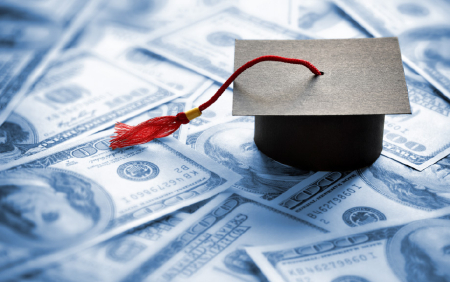Who Is More Likely to Default on Student Loans?

This post seeks to understand how educational characteristics (school type and selectivity, graduation status, major) and family background relate to the incidence of student loan default. Student indebtedness has grown substantially, increasing by 170 percent between 2006 and 2016. In addition, the fraction of students who default on those loans has grown considerably. Of students who left college in 2010 and 2011, 28 percent defaulted on their student loans within five years, compared with 19 percent of those who left school in 2005 and 2006. Since defaulting on student loans can have serious consequences for credit scores and, by extension, the ability to purchase a home and take out other loans, it’s critical to understand how college and family characteristics correspond to default rates.
Just Released: Auto Lending Keeps Pace as Delinquencies Mount in Auto Finance Sector

Total household debt increased by $116 billion to reach $12.96 trillion in the third quarter of 2017, according to the latest Quarterly Report on Household Debt and Credit released today by the New York Fed’s Center for Microeconomic Data. Household debt has been growing since mid-2013, boosted in part by steady growth in auto loan balances, which have grown for twenty-six consecutive quarters thanks to record-high levels of newly originated loans. Although new vehicle sales had begun to slump over the summer after several strong years of growth, September and October saw a rebound in sales, ending with over 18 million vehicles sold (seasonally adjusted at an annualized rate), and auto loan originations in the third quarter were commensurate with these numbers. In this post, we revisit the state of auto lending and auto loan performance, using the New York Fed Consumer Credit Panel which is based on Equifax credit data.
Understanding Permanent and Temporary Income Shocks

The earnings of 200 million U.S. workers change each year for various reasons. Some of these changes are anticipated while others are more unexpected. Although many of these changes may be due to pleasant surprises—such as receiving salary raises and promotions—others involve disappointments—such as falling into unemployment. Arguably, some of these factors have rather short-lived effects on an individual’s earnings, whereas others may have permanent effects. Many labor economists have been interested in these various shocks to earnings. How big are the more permanent shocks to earnings? How large are they relative to those that are temporary in nature? What are the sources of these shocks? In this blog post, we exploit a novel data set that enables us to explore the properties of earnings shocks: their magnitudes as well as their origins.
Just Released: More Credit Cards, Higher Limits, and . . . an Uptick in Delinquency
Household Borrowing in Historical Perspective
Do Credit Markets Watch the Waving Flag of Bankruptcy?
Paul Goldsmith-Pinkham explores how the lifting of bankruptcy flags affects borrowers’ credit scores and credit outcomes.
Just Released: 2017 SCE Housing Survey Finds Increased Optimism about Home Price Growth
Diplomas to Doorsteps: Education, Student Debt, and Homeownership
At the N.Y. Fed: Press Briefing on Household Borrowing with Close‑Up on Student Debt

An examination of recent developments in household borrowing was the focus of a press briefing held this morning at the New York Fed.















 RSS Feed
RSS Feed Follow Liberty Street Economics
Follow Liberty Street Economics